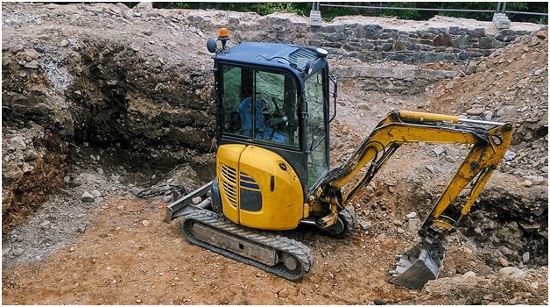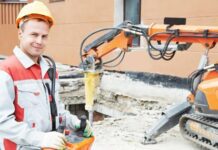Are you new to mini excavators? There are a lot of parts that make up a mini excavator, and it can be confusing trying to figure out how each part works. To help you get started, this blog post will provide an overview of the various mini excavator parts and how they work together. By understanding the parts of your mini excavator, you’ll be able to make more informed decisions and use your equipment more efficiently. Read on to learn more about mini excavator parts!


The House
The first part of a mini excavator is the house, which is the main body of the machine. It houses the operator’s cab, which provides a comfortable and secure environment to control the machine. The house also contains the engine, hydraulic pump, transmission, and other components. It serves as a mounting point for the arm, bucket, and undercarriage. It may also be equipped with additional features such as a fire suppression system or an air conditioning system. Finally, the house of a mini excavator helps protect the internal components from damage and the operator from harm in case of an accident.
The Arm
The next part of a mini excavator is the arm. The arm is the primary tool used to move earth and materials around. It consists of two steel tubes connected by several tractor hydraulic hoses. The arm can rotate left or right in order to move material, and can also be extended and retracted to dig deeper into the earth. When working with a mini excavator, the arm should be operated carefully and securely in order to prevent any damage or injury.
The Bucket
A mini excavator’s bucket is one of its most essential components. It’s used to scoop up and move dirt, sand, gravel, and other materials. Buckets come in different sizes and configurations for different applications.
When looking for a bucket for your mini excavator, it’s important to consider the material you’ll be digging and how deep you need to go. For instance, if you plan on digging through dense soils, you’ll need a heavier-duty bucket with more teeth or a ripper blade.
Mini excavator buckets can be made of steel or aluminum. Steel buckets are stronger and better suited for heavy-duty jobs, while aluminum buckets are lighter and better for lighter-duty tasks. Both materials are highly durable, so choose the one that fits your needs.
Finally, look for buckets with extra features like quick-change systems or adjustable sides. This makes switching out buckets much faster and easier. Also, look for a bucket with a bolt-on edge that helps increase wear resistance and extends the life of your machine.
By investing in the right bucket for your mini excavator, you can ensure your machine performs at peak efficiency and handles any job with ease.
The Undercarriage
The main components of the undercarriage include the tracks, rollers, drive sprockets, idlers, and track frames. The tracks are what provide the machine with its mobility, as they hold and guide the rollers and track frame. The rollers are responsible for reducing friction between the tracks and the ground while the drive sprocket drives the chain of the track in order to move the machine forward or backward. Finally, the idlers help keep tension on the track chain to maintain a consistent movement.
It’s important to regularly inspect and maintain your mini excavator’s undercarriage components to make sure they’re in good condition. Neglecting maintenance can lead to costly repairs down the line. Make sure to check your machine’s tracks, rollers, drive sprocket, idlers, and track frame for signs of wear and tear or damage. If you notice anything unusual, it’s best to take your excavator to a professional for an inspection and repair if necessary.
The Engine
When it comes to mini excavator parts, the engine is one of the most important components. The engine provides the power that is used to move the machine and operate its various functions. Without a functioning engine, the mini excavator would be unable to perform its intended job.
Depending on the size and type of mini excavator you are using, there will be different engines available. Smaller models may feature air-cooled gasoline engines or diesel engines, while larger machines often feature liquid-cooled diesel engines. The engine should be regularly maintained in order to ensure that it operates properly and provides sufficient power for the excavator’s needs.
It’s important to note that all mini excavator engines must be properly serviced in order to keep them operating efficiently. This includes changing the oil, checking fluid levels, inspecting the belts, and performing other maintenance tasks as necessary. Taking the time to properly maintain your mini excavator engine will help extend its lifespan and reduce the chance of costly breakdowns.
Now You know Your Parts
Now that you know the essential parts of a mini excavator, you can tackle any project involving the use of the machine. Knowing the parts that make up the machine is crucial to maintaining its operation and prolonging its life.
It’s important to regularly check the condition of all parts, to learn about damage and wears before your mini excavator breaks down. By knowing the parts that comprise your mini excavator, you’ll be able to more confidently carry out your projects, as well as keep your machine running safely and efficiently.

























